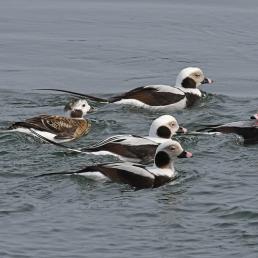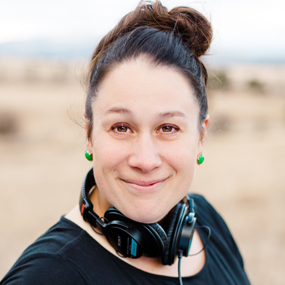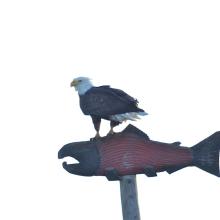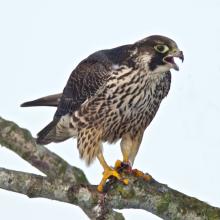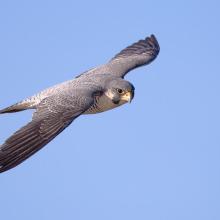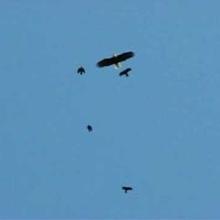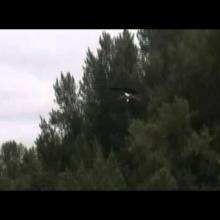

Join BirdNote tomorrow, November 30th!
Illustrator David Sibley and actor H. Jon Benjamin will face off in the bird illustration battle of the century during BirdNote's Year-end Celebration and Auction!
In many birds, plumage is often the easiest way to tell males from females. But in raptors, size is often the best indicator of sex. In many bird and mammal species, males are larger than females. But in birds of prey, including Ospreys, hawks, falcons and eagles, the rule is reversed. It’s females that are bigger.
Today’s show brought to you by the Bobolink Foundation.
BirdNote®
Big She, Little He (in Raptors)
Written by Monica Gokey
This is BirdNote.
Each year when the salmon are running, eagles, hawks and Ospreys flock to riverbanks across the continental Northwest to feast. Seeing so many birds together makes it easier to pick out the subtle differences in birds of the same species.
For example, female raptors are often noticeably larger than males. A female Bald Eagle may weigh as much as 50% more than her mate.
[eagle sounds]
Scientists call this sexual dimorphism. “Di” meaning two; “morph” meaning shape, or appearance. Differences between the sexes.
In many bird species -- and mammals, too, for that matter -- it’s usually males that are bigger.
[Peregrine Falcons, male and female, some from :39 and some from :53 LNS# 136378]
So...why are female raptors bigger than their male counterparts?
Scientists aren’t exactly sure. It may have to do with nest defense… or size advantage may help females better compete for food.
Or maybe it's the females, not the males, that compete for mates.
[Peregrine Falcons, male and female, some from :39 and some from :53 LNS# 136378]
With many species of birds, plumage is often the easiest way to tell males from females. But if you see a group of raptors feasting on salmon by the river, use size as your first clue as to which are females and which are males.
For BirdNote, I’m Michael Stein.
Today’s show brought to you by the Bobolink Foundation.
###
Producer: John Kessler
Executive Producer: Sallie Bodie
Editor: Ashley Ahearn
Associate Producer: Ellen Blackstone
Assistant Producer: Mark Bramhill
Narrator: Michael Stein
Bird sounds provided by The Macaulay Library of Natural Sounds at the Cornell Lab of Ornithology, Ithaca, New York. Bald Eagle LNS#137879 recorded by Gerrit Vyn. Peregrine Falcons LNS#136378 recorded by M. Anderson.
BirdNote’s theme was composed and played by Nancy Rumbel and John Kessler.
© 2019 BirdNote October 2019
ID# raptor-02-2019-10-18 raptor-02
